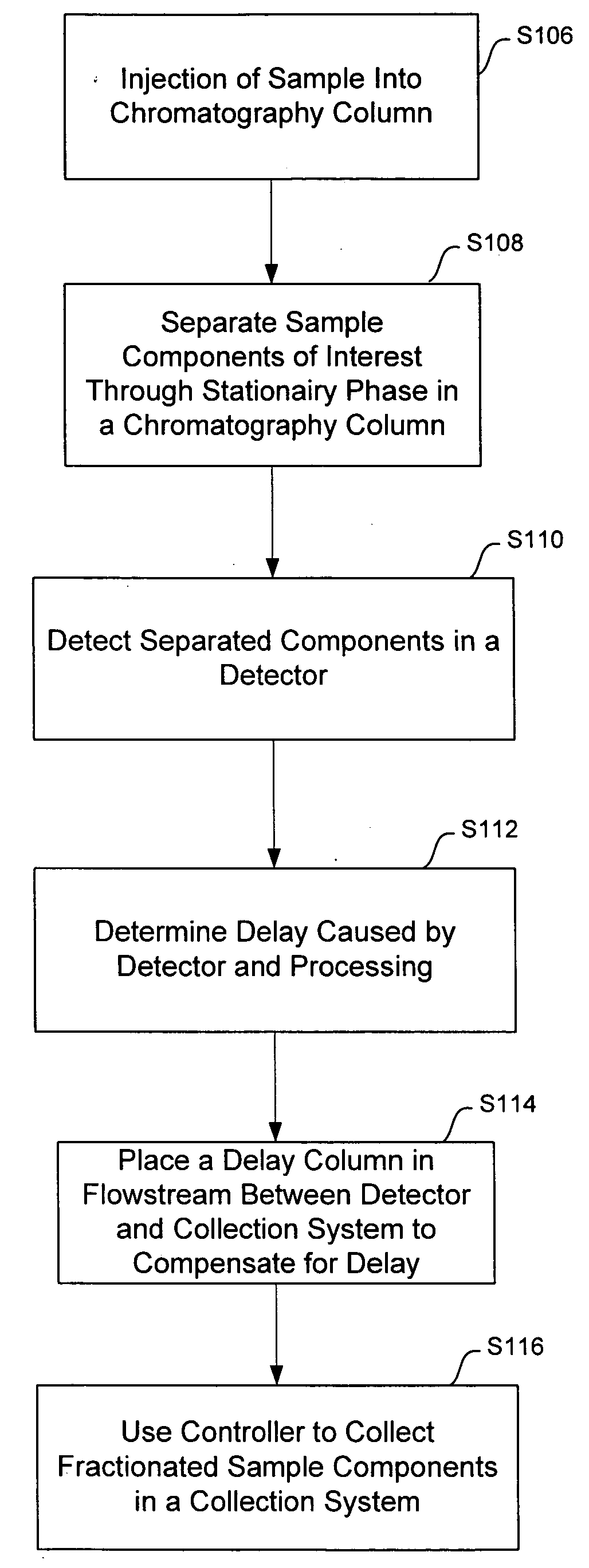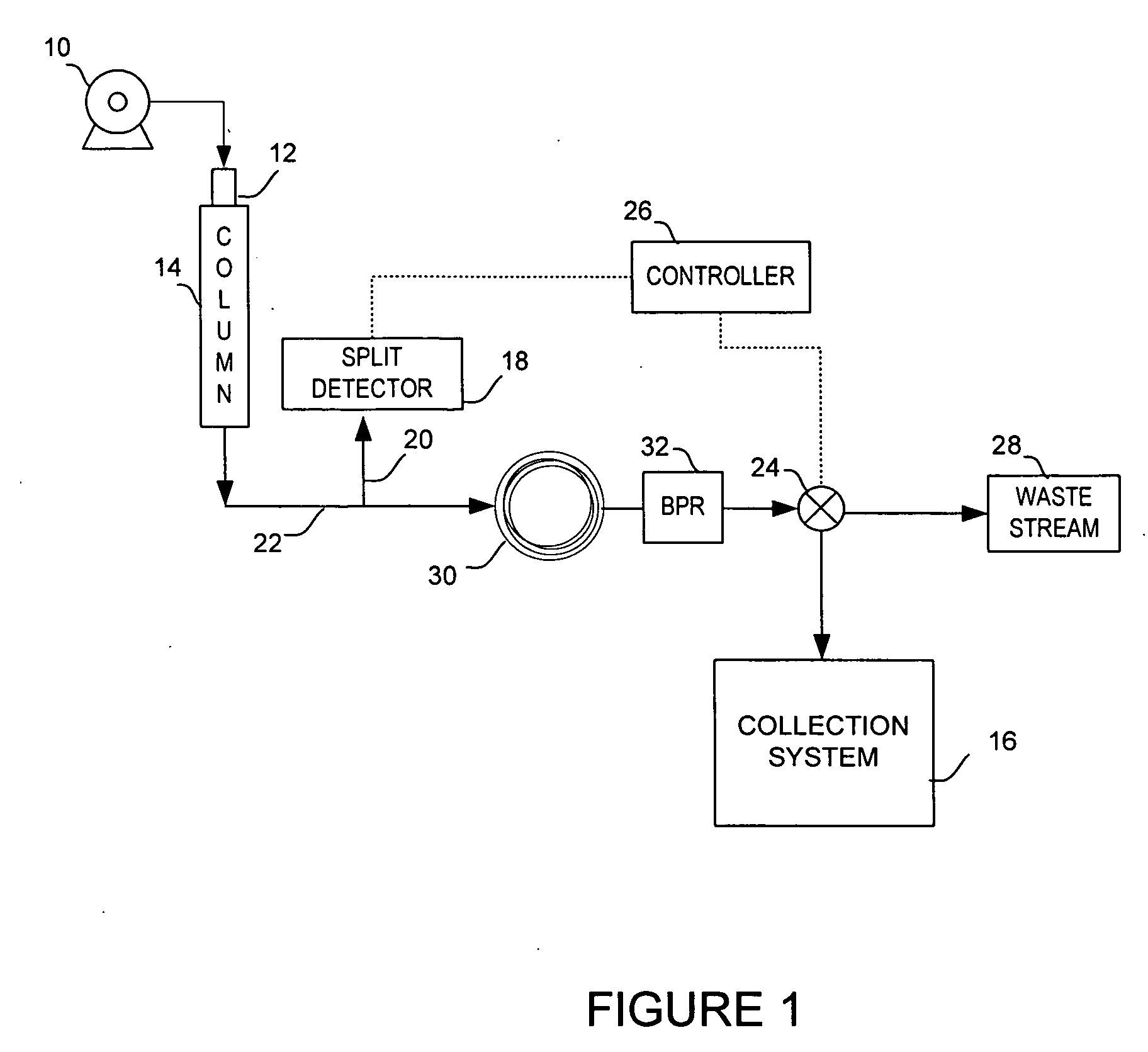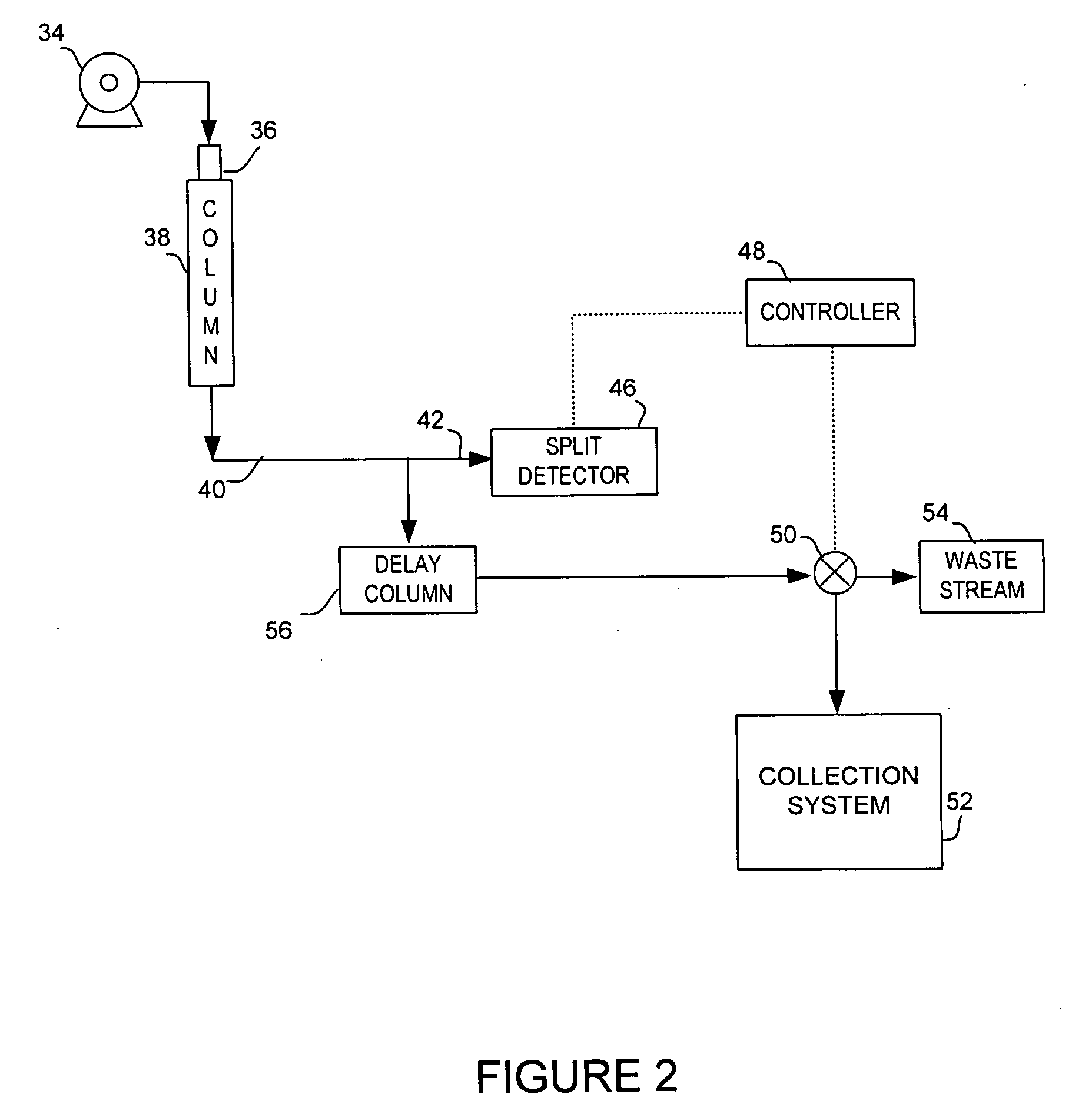Time delay for sample collection in chromatography systems
a chromatography system and sample technology, applied in the field of compound detection and collection system, can solve the problems of no reference discloses, or even addresses, and high waste solvent production, and achieve the effect of slow effective process time for samples and high detection efficiency
- Summary
- Abstract
- Description
- Claims
- Application Information
AI Technical Summary
Benefits of technology
Problems solved by technology
Method used
Image
Examples
Embodiment Construction
[0023]The preferred and alternative embodiments are used in the collection process of sample components, commonly called fractions, that have eluted from a chromatography column. The preferred embodiment is a method and system of using a chromatography packed column with known phase and flow parameters that adds delay of the flowstream prior to entering a collection system directional valve or other re-directing mechanism. In FIG. 2, an exemplary chromatography system capable implementing the preferred embodiment is illustrated. The system may use liquid chromatography (LC), high performance liquid chromatography (HPLC), supercritical fluid chromatography, or supercritical fluid extraction technology.
[0024]The preferred embodiment uses pump system 34 may include multiple pumps with mixtures of modifier liquid and gas, depending upon the type of chromatography system used. Pump 34 feeds a mobile phase under pressure into chromatography column 38. Injection valve 36 provides the means...
PUM
| Property | Measurement | Unit |
|---|---|---|
| diameter | aaaaa | aaaaa |
| diameter | aaaaa | aaaaa |
| diameter | aaaaa | aaaaa |
Abstract
Description
Claims
Application Information
 Login to View More
Login to View More - R&D
- Intellectual Property
- Life Sciences
- Materials
- Tech Scout
- Unparalleled Data Quality
- Higher Quality Content
- 60% Fewer Hallucinations
Browse by: Latest US Patents, China's latest patents, Technical Efficacy Thesaurus, Application Domain, Technology Topic, Popular Technical Reports.
© 2025 PatSnap. All rights reserved.Legal|Privacy policy|Modern Slavery Act Transparency Statement|Sitemap|About US| Contact US: help@patsnap.com



